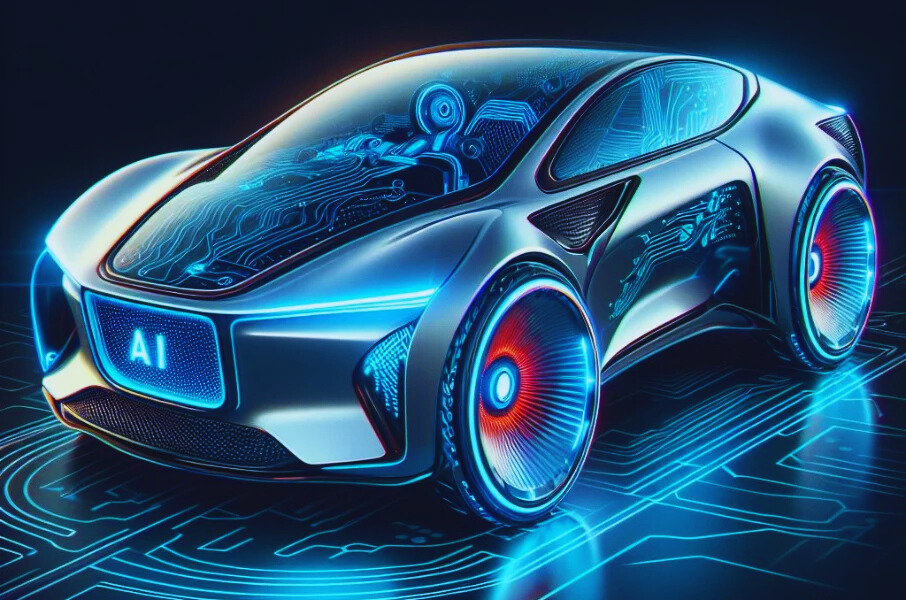Introduction:
The automotive industry is undergoing a profound transformation as cutting-edge technologies continue to reshape the way we drive, commute, and experience vehicles. From electrification to autonomous driving. Upcoming car technology trends are revolutionizing not only the automotive sector but also how society interacts with mobility as a whole.
As we step further into 2024 and beyond, let’s dive into the latest innovations driving the future of transportation and what it means for consumers and manufacturers.
1. Electric Vehicles (EVs) Continuing to Dominate the Market
The rise of electric vehicles (EVs) is no longer just a trend—it’s an industry-wide shift. As countries around the world push for zero-emission targets and phase out internal combustion engine (ICE) vehicles, EVs are rapidly becoming the preferred choice for automakers and consumers alike.
Key Drivers:
- Government Incentives: Many governments have implemented strict emission standards and are offering tax breaks or subsidies to encourage the adoption of EVs.
- Battery Innovation: The evolution of battery technology is making EVs more affordable, with longer ranges and shorter charging times. Solid-state batteries are set to replace lithium-ion batteries, providing higher energy density and improved safety.
- Charging Infrastructure: Companies and governments are investing heavily in the development of widespread fast-charging networks. Which reduce charging times to under 30 minutes, further enhancing the appeal of EVs.
2. Autonomous Driving: From Level 3 to Level 5 Autonomy
Autonomous driving technology is one of the most anticipated developments in the automotive industry. Currently, most vehicles on the road are equipped with Level 2 autonomy, which allows for features like adaptive cruise control and lane-keeping assistance.
However, the industry is moving rapidly toward Level 3 and 4 autonomy, with several companies, including Tesla, Waymo, and General Motors, leading the charge.
Key Developments:
- Advanced AI and Sensors: Artificial intelligence (AI) combined with LiDAR, cameras, and radar is pushing the limits of self-driving capabilities. Autonomous vehicles (AVs) are now able to navigate complex city environments, avoiding obstacles and recognizing traffic patterns.
- Regulation and Legislation: While technology is advancing quickly, regulatory frameworks are still catching up. Safety regulations and public trust will play a significant role in how quickly autonomous driving reaches Level 5 autonomy, where vehicles can operate without human intervention.
- Robotaxis: Companies like Waymo are already testing robotaxi services, which promise to revolutionize ride-sharing by eliminating the need for a human driver, offering safe and efficient transportation at a lower cost.
3. Connected Cars and Vehicle-to-Everything (V2X) Communication
The rise of connected vehicles is one of the most exciting technological advancements in the automotive world. Modern cars are no longer isolated machines; they are part of a broader connected ecosystem that allows them to communicate with other vehicles, infrastructure, and even pedestrians.
Key Trends:
- Vehicle-to-Everything (V2X): This technology enables vehicles to communicate with traffic lights, road signs, and even pedestrians’ mobile devices, providing critical information to drivers or autonomous systems. This real-time communication can reduce traffic accidents, enhance traffic flow, and improve overall driving efficiency.
- 5G Integration: With the rollout of 5G networks, connected cars will benefit from faster data transmission and low latency, enabling safer and more responsive driving. Edge computing will also allow for quicker decision-making in autonomous and connected cars.
- Over-the-Air (OTA) Updates: Connected cars can now receive software updates via over-the-air updates, eliminating the need for drivers to visit dealerships for certain repairs or improvements. This also allows manufacturers to continuously enhance features and fix bugs remotely.
4. Augmented Reality (AR) and In-Vehicle User Experience
The in-car experience is being revolutionized by augmented reality (AR) and a focus on delivering more intuitive and immersive interfaces to drivers and passengers.
The goal is to minimize distractions while providing enhanced driving experiences that make commuting safer, more convenient, and enjoyable.
Key Innovations:
- AR Head-Up Displays (HUDs): Augmented reality head-up displays project critical information directly onto the windshield, such as navigation directions, speed limits, and potential hazards. This technology helps drivers keep their eyes on the road, improving safety.
- Personalized AI Assistants: Automakers are integrating AI-driven personal assistants that learn drivers’ preferences, making recommendations for routes, entertainment, or vehicle settings. These assistants can also manage communication, control infotainment systems, and integrate seamlessly with smart homes.
- Immersive Entertainment: With the rise of autonomous driving, passengers will no longer need to focus solely on the road. In-car entertainment systems are set to evolve into fully immersive experiences, with virtual reality (VR) and AR systems, allowing passengers to engage in entertainment, work, or relaxation during travel.
5. Sustainable and Eco-Friendly Materials in Car Manufacturing
Sustainability is a key concern across many industries, and the automotive sector is no exception. Beyond Car Technology electric drivetrains, automakers are exploring ways to make vehicles more sustainable through the use of eco-friendly materials and circular manufacturing processes.
Key Focus Areas:
- Recycled Materials: Automakers are increasingly using recycled plastics, metals, and other materials in vehicle construction. For instance, companies like BMW and Ford are adopting recycled ocean plastics for interior components, reducing environmental impact.
- Biodegradable Components: There is ongoing research into the development of biodegradable materials for car interiors and exteriors, such as plant-based leather alternatives and organic plastics. These materials reduce waste and lower the carbon footprint associated with vehicle production.
- Circular Economy: Many companies are embracing the circular economy concept, which focuses on recycling and reusing materials. This includes designing vehicles with fewer components, making them easier to dismantle and recycle at the end of their life cycle.
6. Smart Mobility and Shared Transportation
The concept of mobility as a service (MaaS) is transforming the way we think about vehicle ownership. In urban areas, where space is limited and congestion is a growing problem, car-sharing, ride-hailing, and other shared mobility services are becoming popular alternatives to personal car ownership.
Key Changes:
- Subscription Models: Several automakers are now offering subscription-based services, allowing consumers to drive a variety of vehicles without the commitment of ownership. These services typically include insurance, maintenance, and the option to swap cars frequently.
- Autonomous Shared Fleets: In the future, autonomous ride-sharing services could drastically reduce the need for personal vehicles in cities. These fleets will provide affordable, efficient, and convenient transportation for people, reducing congestion and emissions in urban areas.
- Micro-mobility Solutions: With the rise of electric scooters, e-bikes, and shared micro-mobility solutions, consumers are opting for smaller, more efficient ways to navigate congested city streets. Automakers are beginning to invest in micro-mobility startups as part of their broader smart mobility strategies.
7. Vehicle Electrification Beyond Cars: Trucks and Air Mobility
While electric vehicles are transforming personal transportation, electrification is extending beyond passenger cars into other modes of transport. From trucks to electric aircraft, vehicle electrification is set to revolutionize logistics and air travel.
Key Areas of Growth:
- Electric Trucks: Commercial electric trucks, such as those being developed by Tesla, Rivian, and Nikola, are set to revolutionize freight transportation. These trucks promise to lower operating costs, reduce emissions, and improve efficiency in logistics networks.
- Urban Air Mobility (UAM): The rise of electric vertical takeoff and landing (eVTOL) aircraft is creating a new segment of the market known as urban air mobility. These electric air taxis will enable short, efficient, and eco-friendly trips across cities, reducing traffic congestion on the ground.
8. Artificial Intelligence and Machine Learning in Vehicle Design and Manufacturing
Artificial intelligence (AI) and machine learning are playing increasingly significant roles in the design, development, and manufacturing of vehicles. From optimizing production lines to predicting maintenance issues, AI is streamlining processes and improving the quality of vehicles.
Major Applications:
- Predictive Maintenance: AI can analyze vehicle data to predict when components will fail, allowing manufacturers and drivers to perform maintenance before a failure occurs. This improves vehicle reliability and reduces downtime.
- Design Optimization: Machine learning algorithms are helping engineers design more aerodynamic, efficient. Safer vehicles by analyzing large datasets and simulating different design scenarios.
- Manufacturing Automation: AI-powered robots and automated systems are making vehicle manufacturing more efficient and reducing costs, while also enhancing precision and quality control.
Conclusion
The future of the automotive industry is bright, with rapid advancements in electric vehicles, autonomous driving, and connected car technologies. These trends are not only transforming the way we drive but also reshaping the broader landscape of transportation.
As we move into 2024 and beyond, consumers can expect to see smarter, greener, and more convenient mobility options that align with the goals of sustainability, safety, and innovation.
Whether you’re a car enthusiast, a tech lover, or simply someone who enjoys the convenience of modern transportation. These upcoming car technology trends promise to enhance your driving experience in ways previously unimaginable.








